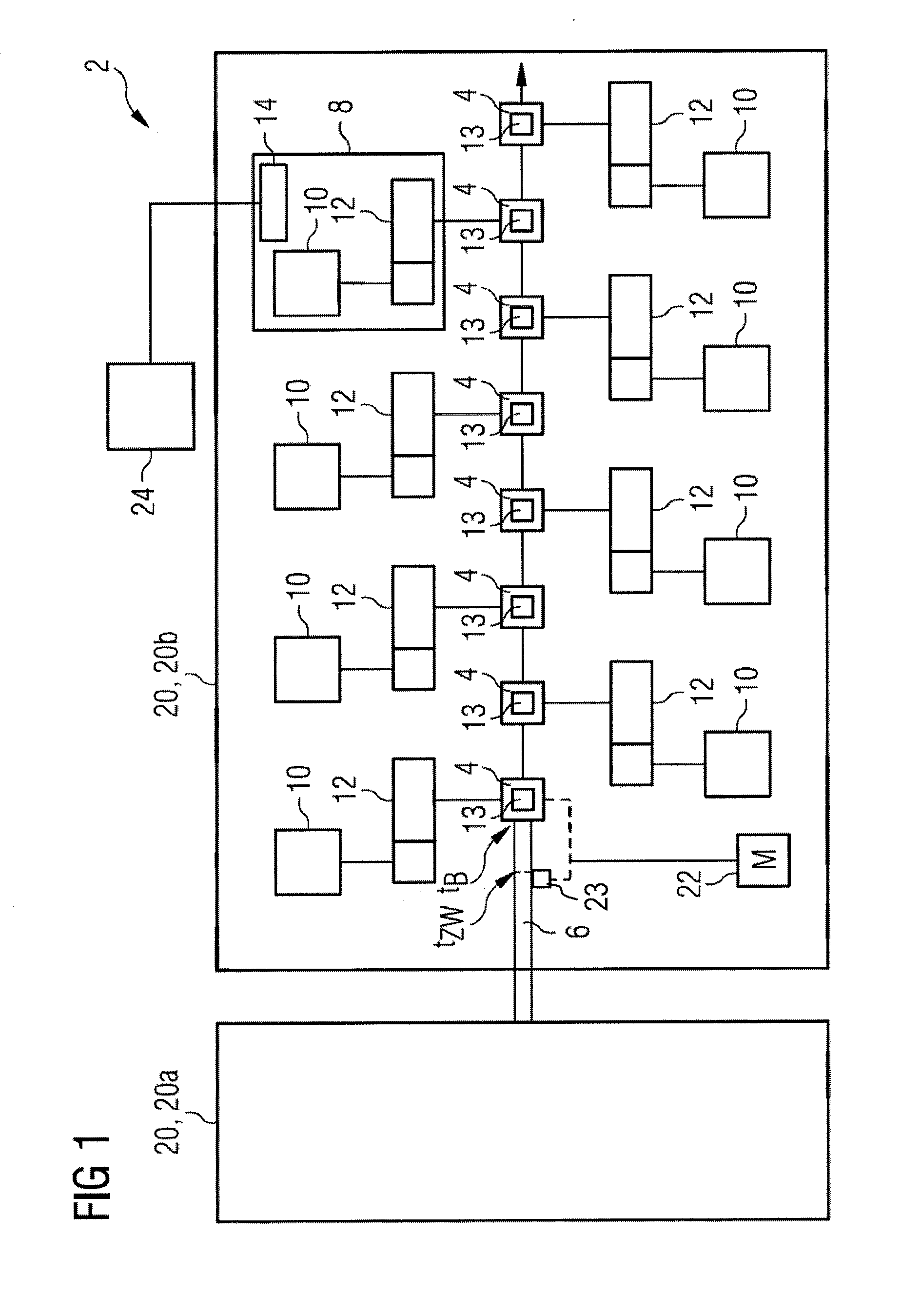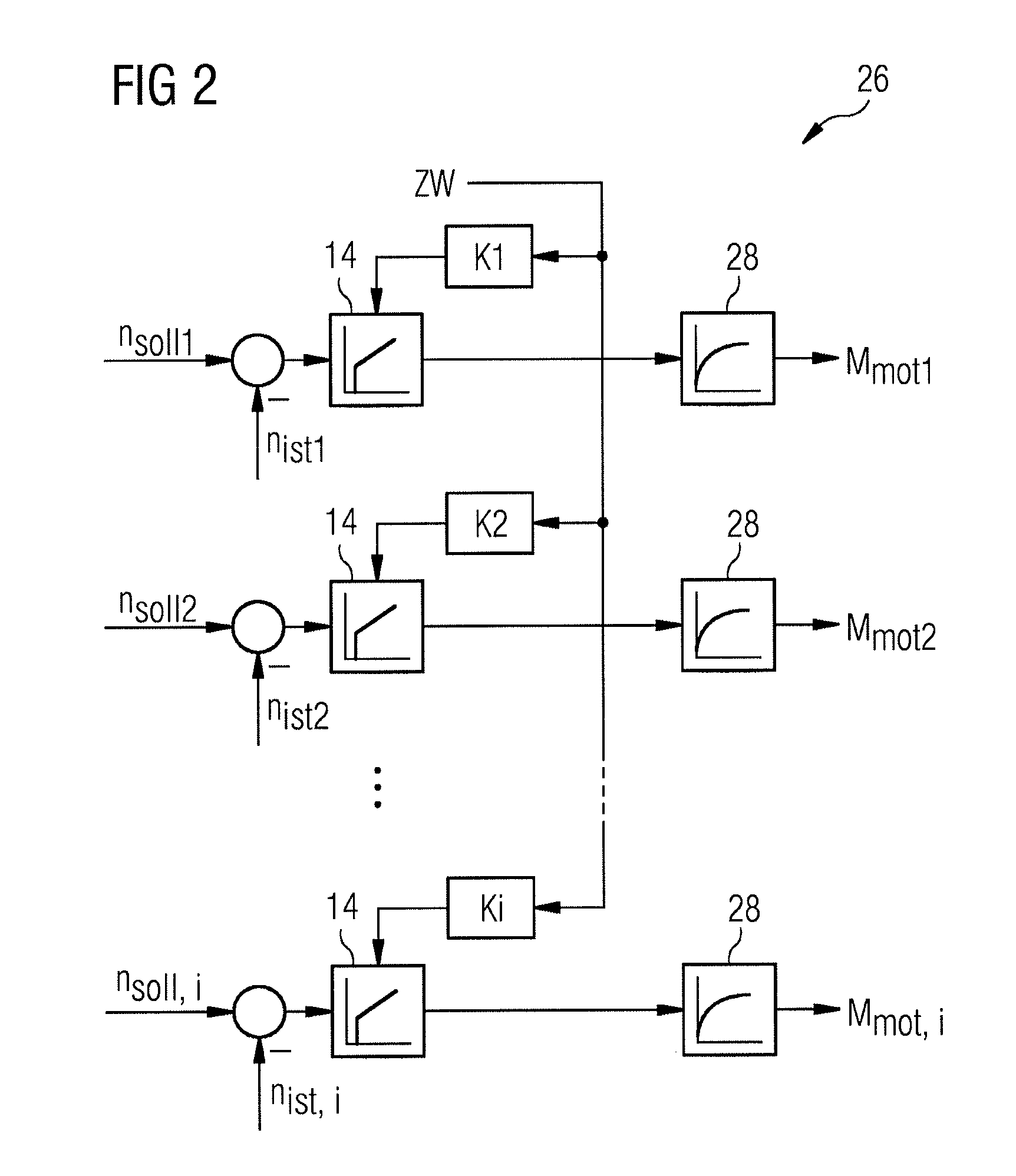Method for processing material to be rolled on a rolling line, and rolling line
a technology of rolling line and rolling line, which is applied in the direction of rolling speed control device, tension/compression control device, etc., can solve the problems of wire or loop breakage, tension or compression load, and the approach of very time-consuming and costly
- Summary
- Abstract
- Description
- Claims
- Application Information
AI Technical Summary
Benefits of technology
Problems solved by technology
Method used
Image
Examples
Embodiment Construction
[0031]FIG. 1 shows a section of a rolling line 2 with two rolling sections 20, e.g. an intermediate section 20a and a finishing section 20b. A rolling section 20 incorporates at least two roll stands 4 each with at least one roll 13, e.g. two rolls 13, for the processing of a material to be rolled 6. FIG. 1 shows, by way of example, eight successive roll stands 4, for the sake of clarity only illustrating those for the finishing block 20b, of a rolling section 20 through which passes the material to be rolled 6, e.g. a billet which is being rolled down to wire.
[0032]Assigned to each roll stand 4 is a separate drive 8, incorporating a motor 10 and a gearbox 12, with a rotational speed regulator 14 which, for the sake of clarity, in FIG. 1 is only drawn in for one roll stand 4. The rotational speed regulator 14 regulates the rolls 13 of the drive 8 concerned to a setpoint value, nSoll, for the rotational speed. For this purpose, an actual value of the rotational speed, nIst, is contin...
PUM
| Property | Measurement | Unit |
|---|---|---|
| Time | aaaaa | aaaaa |
| Force | aaaaa | aaaaa |
| Speed | aaaaa | aaaaa |
Abstract
Description
Claims
Application Information
 Login to View More
Login to View More - R&D
- Intellectual Property
- Life Sciences
- Materials
- Tech Scout
- Unparalleled Data Quality
- Higher Quality Content
- 60% Fewer Hallucinations
Browse by: Latest US Patents, China's latest patents, Technical Efficacy Thesaurus, Application Domain, Technology Topic, Popular Technical Reports.
© 2025 PatSnap. All rights reserved.Legal|Privacy policy|Modern Slavery Act Transparency Statement|Sitemap|About US| Contact US: help@patsnap.com



